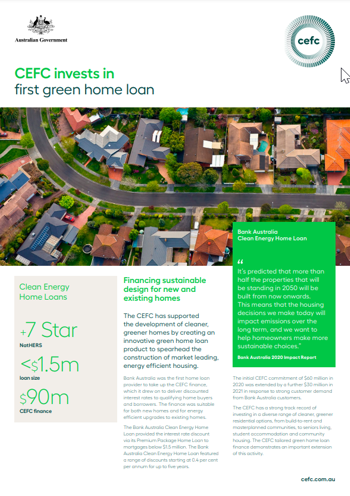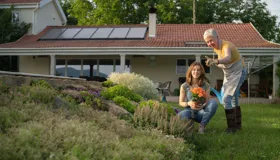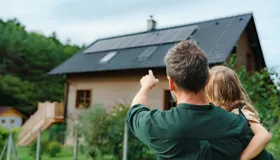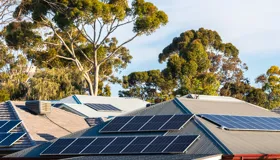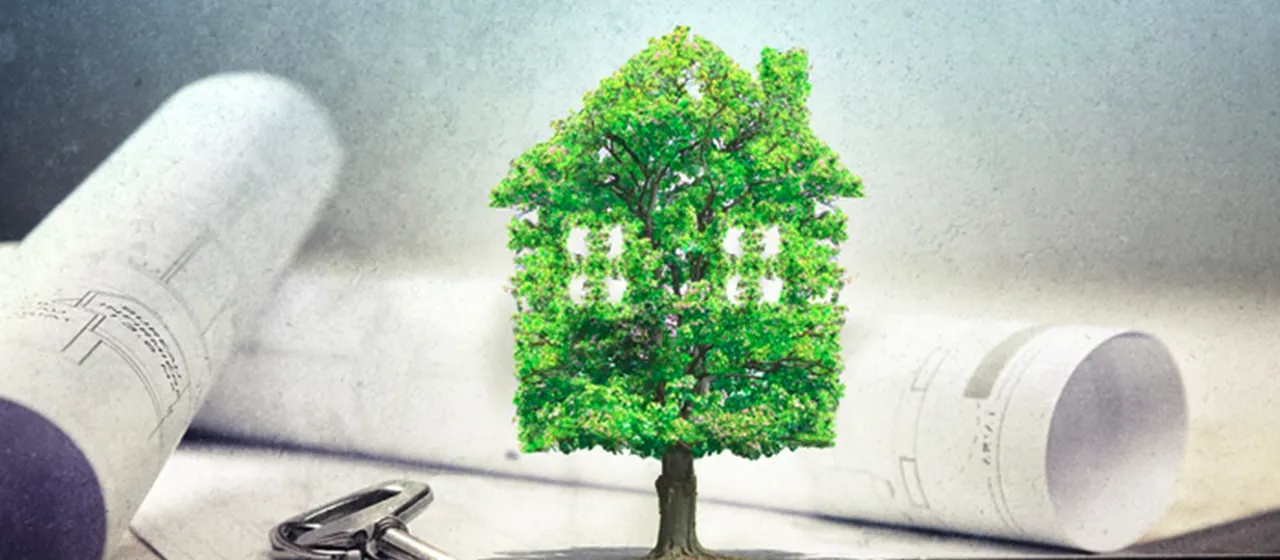
Innovative green home loans for sustainable housing
Investing in market leading, energy efficient homes
The CEFC has supported the development of cleaner, greener homes by creating an innovative green home loan product to spearhead the construction of market-leading, energy efficient housing.
7+ Star
NatHERS
<$1.5m
loan size
$120m
CEFC finance
Our customers have told us how important action on climate change is to them. We’re proud that our Clean Energy Home Loan already makes up more than one per cent of our total home loan portfolio. As we start to set net zero targets for the emissions from our lending, we know we need to keep innovating to incentivise the green homes of the future.Damien WalshManaging Director, Bank Australia
Our investment
Bank Australia was the first home loan provider to take up the CEFC green home loan finance to deliver discounted interest rates to qualifying home borrowers.
Since January 2020 more than 300 energy efficient homes have benefited from loans through the Bank Australia Clean Energy Home program, which provided a discounted rate to homes with a 7 stars or higher Nationwide House Energy Rating Scheme (NatHERS) rating. The finance was suitable for both new homes and for energy efficient upgrades to existing homes. In April 2022, Bank Australia launched its Eco Plus Clean Energy Home Loan, where homes with a 7.5 star rating or higher and a solar system could be eligible for a CEFC-backed discount on their home loan interest rate for up to five years. Bank Australia’s customers were also able to qualify for the Eco Plus Clean Energy Home Loan using the new Green Star Homes certification from the Green Building Council of Australia. Qualifying homes needed to have a high NatHERS rating, use renewable power and be all-electric.
An initial CEFC Bank Australia commitment of $60 million in 2020 was extended by a further $60 million in 2021 in response to strong customer demand from Bank Australia customers.
our impact
Building homes that have strong energy efficiency measures today creates more resilient cities and regions for the future.
At the same time, incentivising new home buyers and builders to adopt stronger sustainability design standards is an important step in reducing carbon emissions as we transition towards net zero emissions.
ASBEC and ClimateWorks Australia have identified potential energy savings as high as 25 per cent through the adoption of higher energy efficiency standards in new residential buildings.
The benefits would flow from measures such as improved airtightness, double glazed windows, insulation, adjustable outdoor shading, ceiling fans and more efficient air-conditioning, lighting and domestic hot water systems. The upfront costs of energy efficiency inclusions would be more than offset by lower energy bills, reduced spending on heating, cooling and ventilation equipment, and savings to the electricity network.
Preliminary economic modelling undertaken by ASBEC and the CSIRO has found that investing in voluntary measures to accelerate Australia’s transition to sustainable homes by 2030 would deliver more than half a billion dollars of extra investment in the construction industry, create over 7,000 new jobs and save Australians more than $600 million on their energy bills.
Expanding on its Clean Energy Home Loan and products that support climate action, Bank Australia has produced a Climate Action Strategy, and has pledged it would achieve net zero across its operations and portfolio by 2035.
Bank Australia is working with its customers to reduce their emissions from electricity and gas use. As part of its Climate Action Strategy, it is also using 100 per cent renewable electricity and has switched its car fleet to hybrids.
Read our insight
CEFC invests in first green home loan
The CEFC has supported the development of cleaner, greener homes by creating an innovative green home loan product to spearhead the construction of market leading, energy efficient housing.
Read more
